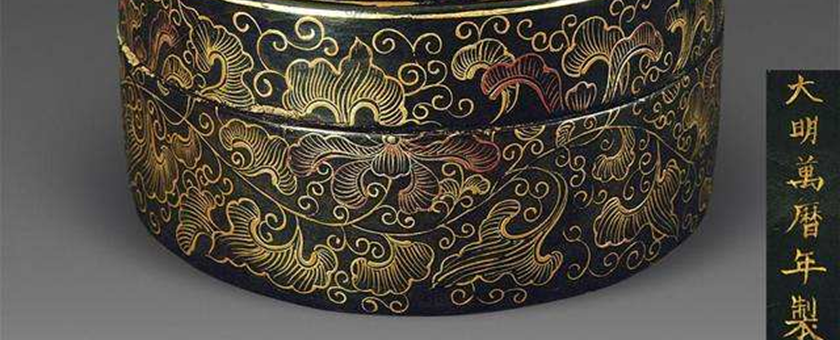Lacquer Ware
Chinese lacquer ware is an important invention in chemical process, arts and crafts in ancient China. The original wares in China were those coated with black and red lacquers. Since the Neolithic Age, Chinese have known the properties of paint and used it to make machines. After the Shang and Zhou Dynasties to the Ming and Qing Dynasties, Chinese lacquer craft continued to develop and reached a fairly high level.

History of Chinese Lacquer Ware
Chinese lacquer ware was created before the Neolithic Age (10000-2000 BC) and before 7,000 years ago. In 1978, a small red lacquer bowl was found in Yuyao City, Zhejiang Province, making it the oldest varnish ornament in the world.
It was not until the Han Dynasty (206 BC-ad 220) that lacquer began to replace bronze and was used in everyday utensils and furniture. From Han Dynasty (206 BC - AD 220) and beyond, techniques such as gold and silver inlay and sculptural design became increasingly popular. However, with the advent of ceramics, lacquer began to disappear from daily life and was valued for its artistic quality.
During Song Dynasty (960-1279), plain lacquer ware was popular in China. The simplicity of the monochrome lacquerware allows the craftsman to focus on designing and producing the smooth texture needed for rich and unique woodwork similar to the current popular design. During Ming (1368-1644) and Qing (1644-1912) Dynasties, lacquer ware was mainly used for decoration rather than practical use. Lacquerware entered a new era of architecture and design.

Brief Introduction of Chinese Lacquer Ware
Chinese lacquer is a natural varnish made from the sap of the lacquer tree. China is rich in lacquerware resources. Sumac trees in mainland China are distributed in 550 counties in 23 provinces. It is exposed to the air and forms a plastic coating that is resistant to water, acid or alkali corrosion. In making lacquerware, the primer is first applied to the core material and then a very thin coat of superior paint. Once these are dry, the last layer is added to make the lacquer strong and light, while maintaining an elegant appearance and harmonious color. During Tang, Song and Yuan Dynasties, lacquer production began to flourish.

Craft of Lacquer Ware
The main craft of carved lacquer is carving and the main raw material is paint, so it’s called carved lacquer. The production process is very complex Through design, base, color, carving, polishing, proofing and other procedures, each of the technical requirements are very high. Sculpture is the main process. Most are flat knife carving method.

Beijing Lacquerware
Beijing Lacquer appeared in late Yuan Dynasty. It was an important decoration in the palace during the Ming and Qing Dynasties. After the founding of the People's Republic of China, Beijing carved lacquer is one of the important gifts given by Chinese leaders to the outside world. It is also a kind of product for foreign exchanges, which has been strongly supported by government officials. Due to the dedication and innovation of Beijing artists, carved lacquer has won many awards at home and abroad, showing the important position of Beijing Lacquer to the world. Beijing Carved Lacquer, Hunan Xiang Embroidery and Jiangxi Jingdezhen Pottery are known as the "three advantages of Chinese arts and crafts".
Lacquerware in Beijing varies in size. The large ones serve as decorative furniture, and the small ones have practical USES for bowls and plates, both of which are artifacts in the Beijing style.
There are two main types of Beijing paint. One is carved lacquer, which appeared in the 14th Century and has a long history. Carved lacquer can also be used in copper as the main body and burned into enamel. The interfaces are gold-plated and the body requires red, green and yellow paint, some requiring hundreds of layers. You can't carve until the paint is dry. The other one is inlaid with gold lacquer, which is also a specialty of Beijing. It is divided into colored drawing, inlaid with gold, Luoxi, gold and silver pinto, painting and friction painting. They are simple and radiant, with royal flavor.


 Flow us
Flow us

